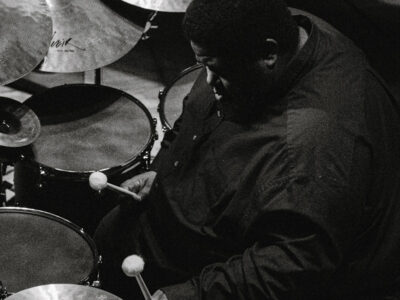
Research | “Oh, golly, they are both absolutely wonderful feelings. It’s hard for me to put in words, to compare one over the other. I guess I simply can’t,” says Dr. Peter Dodson, professor of anatomy in the School of Veterinary Medicine and professor in the Department of Earth and Environmental Sciences.
The noted dinosaur expert is trying—and failing—to pick the more satisfying of two recent achievements. In a paper published in Acta Geologica Sinica last September, Dr. Hailu You Gr’02 named a dinosaur in honor of Dodson, his former teacher, in recognition “of his contribution to the study of horned dinosaurs.” And this past spring, Dodson himself was the lead author on a paper describing another newly discovered dinosaur published in the journal Acta Paleontologica Polonica.
In the case of the dinosaur-naming, Dodson compares his feeling to the pleasure a parent takes in a child’s accomplishments. “My students are my intellectual children,” he says. “And Hailu has turned out absolutely splendidly, everything that I hoped he would be.” With evident parental pride, Dodson tells how, in 2003, You managed a feat that may be unprecedented in the history of paleontology by describing five new dinosaurs in a single year, “which is extraordinary.”
One of these was Magnirostris dodsoni—“a fairly small, plant-eating dinosaur, with a fan-shaped frill or shield at the back of the skull,” which lived in the Late Cretaceous Period some 90-65 million years ago,” says Dodson. “It is related to the great dinosaurs like triceratops that everybody knows, but it was a much smaller, primitive kind” of creature. (The first word translates as “large beak”—a reference to the specimen’s “robust rostral bone” and not any physical feature of Dodson’s.)
The specimen was actually collected in the Bayan Mandahu area of Inner Mongolia by the Sino-Canada Dinosaur Project in the early 1990s, and had been displayed at the Museum of the Institute for Vertebrate Paleontology and Paleoanthropology in Beijing, where You received his master’s degree and is currently a research associate.
Dodson recalls visiting him there in 1997, and telling him that the specimen was mislabeled as a Protoceratops, “a kind of dinosaur that had been described almost 100 years before,” he says. “Hailu had just become my student, and he processed it, but I didn’t know what was going on in his head at the time. That was the last time we ever discussed it—then, sure enough, six years later he described the specimen and named it after me.”
In his latest contribution to the field, Dodson and a team of Penn researchers have described a new dinosaur species discovered in southern Montana—the first to be found in the area in more than a century. The specimen was actually found by an emeritus professor at the veterinary school, William Donawick, an equine surgeon, who noticed the bones “sticking out of the ground” while horseback-riding on a visit to his daughter and son-in-law’s ranch in Wyoming. Donawick brought a few of the bones back to Philadelphia to be examined by Dodson, who allows that he was “pretty excited.”
The initial discovery was in 1998, and the rest of the specimen was collected by Dodson and his team the following summer, followed by “the long process of discovery and analysis and description and publication,” which, at five years, was typical, he says. Suuwassea emilieae, as the species has been designated, was a sauropod dinosaur—related to, but at 50 feet long, somewhat smaller than Diplodocus and Apatosaurus—that lived about 150 million years ago. Its most surprising feature, says Dodson, is the presence of a second hole in its skull—a first for a North American dinosaur, and of unknown function. (Similar species have a single hole on the top of the skull related to the nasal cavity.)
Suuwassea refers to the Native American Crow word for “ancient thunder,” as well as “thunder lizard,” the original nickname for Apatosaurus. The emilieae part of the name is for Emilie deHellebranth, “a very dear elderly lady noted for her philanthropy for a number of causes, including the School of Veterinary Medicine,” says Dodson. “She took a shine to my work and [supported it] for a number of years, and so we did want to honor her.”
Continuing to weigh the comparative joys of naming and being named, Dodson says: “In a certain sense, I suppose having a species named after you is even sweeter, particularly when you don’t anticipate it coming.” Some 25 years ago in the Gazette, Dodson doubted that such an honor would ever come his way—the story was about his view that certain so-called new dinosaurs were more likely juveniles of known species, which would have the effect of reducing prestige-enhancing naming opportunities—but Magnirostris is actually the second species dodsoni.
In the first instance, however, the specimen in question was a “tiny piece of a fossil frog, maybe a centimeter long,” Dodson recalls. While he describes it as a “great surprise and very pleasing,” he adds that he could not tell one fossil frog from another. “Considering my career, a fossil frog will always be dear to me, but having a dinosaur named for you is a somewhat larger, more tangible” honor.—J.P.




